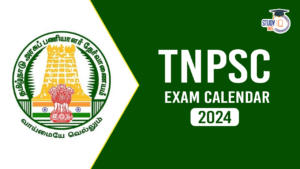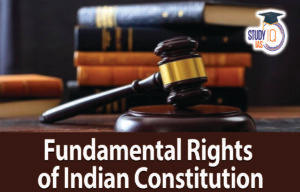Daily Current Affairs for UPSC 2022
Q) Recently seen in news, the term ‘Natovenator polydontus’ is best described by which one of the following:
- A new species of insectivorous plant discovered in the Naga Hills.
- A diving bird dinosaur fossil found in the Gobi Desert in Mongolia.
- An invasive species of grass found in the floodplains of the River Brahmaputra
- A migratory bird found in the Deccan Plateau’s wetlands during the winter.
Daily Current Affairs for UPSC – 3 December 2022
Explanation:
- Option (2) is correct: A newly discovered dinosaur fossil from Mongolia’s Gobi desert has been named Natovenator polydontus. The dinosaur lived about 72 million years ago during the Cretaceous Period. It was built like a diving bird while possessing a goose-like elongated neck and a long flattened snout. The dinosaur was adapted to a semi-aquatic lifestyle in a freshwater ecosystem. It may have used its flexible neck to catch fish and insects or diving underwater to capture its prey. Streamlining a body is a major adaptation for aquatic animals to move efficiently in the water. Whereas diving birds are well known to have streamlined bodies, such body shapes have not been documented in non-avian dinosaurs. Its body shape suggests that Natovenator was a potentially capable swimming predator. The Gobi Desert is a vast, cold and arid region located in northern China and southern Mongolia. It is the largest desert in Asia. Most of the desert area is dominated by an extraordinary arid environment, with dark-colored rocky outcrop.
Q) With reference to personality rights, consider the following statements:
- There is no separate codified law in India to deal with personality rights.
- These rights are governed by the Trademarks Act 1999, which prohibits the use of personal names and representations.
- Personality rights fall under the tort of passing off, whereby one party cannot sell its goods by using another person’s name.
Which of the statements given above are correct?
- 1 and 2 only
- 1 and 3 only
- 2 and 3 only
- 1, 2 and 3
Explanation:
- Statement 1 is correct: Personality rights refer to the right of a person to protect his/her personality under the right to privacy or property. These rights are important to celebrities as their names, photographs or even voices can easily be misused in various advertisements by different companies to boost their sales. There is no separate codified law in India dealing with personality or celebrity rights. The closest statute to protect personality rights is Article 21 of the Constitution of India under rights to privacy and publicity.
- Statement 2 is correct: Personality rights consist of two types of rights, that is, the right to publicity involving the right to keep one’s image and likeness from being commercially exploited without permission or contractual compensation. Secondly, the right to privacy involves the right to not have one’s personality represented publicly without permission. Section 14 of the Indian Trademarks Act, 1999, prohibits the use of personal names and representations. As per the provisions of the Copyright Act 1957, the Authors or the Performers have the right to be given credit or claim authorship of their work and have a negative right restraining others from causing any kind of damage to their work which consequently disrupts their reputation.
- Statement 3 is correct: Personality Rights are also protected under the common law remedy of passing off and that of Law of Torts. The law of torts in India is a body of law that addresses and provides remedies for non-contractual acts of civil wrongdoings. It takes place when someone intentionally or unintentionally passes off their goods or services as those belonging to another party.
Q) Consider the following statements about the gas pricing mechanism in India:
- It is an average of benchmark global gas rates and India’s LNG imports.
- It is revised on a quarterly basis to reflect global price changes for gas.
Which of the statements given above is/are not correct?
- 1 only
- 2 only
- Both 1 and 2
- Neither 1 nor 2
Explanation:
- Statement 1 is correct: India’s gas price is determined at an average price of LNG imports into India and benchmark global gas rates. It is 175 million standard cubic metre a day (MMSCMD), of this 93 MMCMD is met through domestic production and 82 MMSCMD through LNG imports. Gas consumption is directly linked to supply availability. India aspires to become a gas-based economy with the share of natural gas in its primary energy mix targeted to rise to 15 per cent by 2030 from the existing level of around 6.3 per cent.
- Statement 2 is incorrect: Under the current mechanism, price of domestically produced natural gas is revised in line with the average prices in four key global markets : US Henry Hub, Canada Alberta gas, UK NBP, and Russian Natural Gas , every six months. Local gas prices are at a record high due to the surge in global prices because of the ongoing Russia-Ukraine conflict and are expected to rise further. Administered Price Mechanism (APM) gas is the legacy or old fields which were given to ONGC and OIL on a nomination basis without any condition of sharing profits and therefore the government controls its price. It accounts for over 90 per cent of ONGC natural gas output.
Q) With reference to red coastal sand dunes, consider the following statements:
- They are a geographical feature found in equatorial regions in South Asia.
- The red colour is obtained due to the oxidation of the sand.
- The badlands topography is a feature found in these areas.
Which of the following statements is/are correct?
- 1 and 2 only
- 2 only
- 1 and 3 only
- 2 and 3 only
Explanation:
- Statement 1 is incorrect: Red coastal sand dunes are part of the continuation of the evolution of the earth and represent the late quaternary geologic age. Such sand deposits have been reported only from three low latitude tropical regions in South Asia, the Teri Sands of Tamil Nadu, the Erra Matti Dibbalu in Andhra Pradesh and Red Coastal Sands of Sri Lanka. Such features do not occur in equatorial regions or temperate regions due to many scientific reasons.
- Statement 2 is correct: Erra Matti Dibbalu were formed due to sea-land interaction. The dunes comprise of a mixture of sand (40-50 percent), silt and clay (another 50 percent) with oxidation giving the unique red colour. This site has been declared as a geo-heritage site by the Geological Survey of India (GSI) in 2014. The government of Andhra Pradesh has listed it under the category of ‘protected sites’ in 2016.
- Statement 3 is correct: The red sand sediments are unconsolidated and loose. Every monsoon the sediments are washed away, turning the sea a bright red. Degradation due to human interference such as digging, climbing, littering is affecting their stability. The area displays badland topography with different geomorphic landforms, including gullies, sand dunes, buried channels, beach ridges, paired terraces, the valley in the valley, wave-cut terrace, knick point and waterfalls.
Q) Consider the following statements about the Start-Ups Intellectual Property Protection (SIPP) scheme:
- Under the scheme, the fee for intellectual property facilitators is fully funded by the central government.
- Any start-up that has completed five years from the date of incorporation is eligible to receive benefits under the scheme.
Which of the statements given above is/are correct?
- 1 only
- 2 only
- Both 1 and 2
- Neither 1 nor 2
Explanation:
- Statement 1 is correct: Scheme for facilitating startups’ Intellectual Property Protection (SIPP), 2016 aims to protect and promote the Intellectual Property Rights (IPR) of Startups and to encourage innovation and creativity among them. It facilitated start-ups in filing and processing of their patent, design or trademark application through the assistance of IP Facilitators, whose fee was borne by the Office of the Controller General of Patents Designs and Trademarks, Department for Promotion of Industry and Internal Trade, Government of India. Scheme was extended for a period of three years till 31st March 2023.
- Statement 2 is incorrect: Any Start-Up certified by the Start-up Certification Board as having an innovative business is eligible to apply under the scheme. For this purpose, Start-up means an entity, incorporated or registered in India not prior to seven years (in the case of Startups in the Biotechnology sector, the period shall be up to ten years), with annual turnover not exceeding INR 25 crores in any preceding financial year, working towards innovation, development, deployment or commercialization of new products, processes or services driven by technology or intellectual property or it has completed 7 years from the date of incorporation/registration.


 Current Affairs 24th April 2024 for UPSC...
Current Affairs 24th April 2024 for UPSC...
 TNPSC Exam Calendar 2024, Check Exam Dat...
TNPSC Exam Calendar 2024, Check Exam Dat...
 Fundamental Rights of Indian Constitutio...
Fundamental Rights of Indian Constitutio...

















